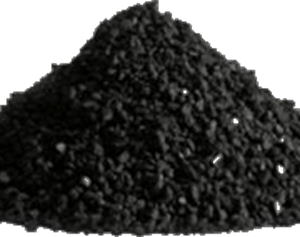Description
Sodium Carbonate (Soda Ash)
From Wikipedia, the free encyclopedia
Sodium carbonate (also known as washing soda or soda ash), Na2CO3, is a sodium salt of carbonic acid. It most commonly occurs as a crystalline heptahydrate which readily effloresces to form a white powder, the monohydrate. It has a cooling alkaline taste, and can be extracted from the ashes of many plants. It is synthetically produced in large quantities from table salt in a process known as the Solvay process.
Uses
- Sodium carbonate’s most important use is in the chemical make-up of glass. When heated at very high temperatures, combined with sand (SiO2) and calcium carbonate (CaCO3), and cooled very rapidly, sodium carbonate can be used to form a transparent non-crystalline material, commonly known as glass.
- In chemistry, sodium carbonate is often used as an electrolyte. This is because electrolytes are usually salt based, and sodium carbonate acts as a very good conductor in the process of electrolysis.
- Domestically it is used as a water softener during laundry. It competes with the ions magnesium and calcium in hard water and prevents them from bonding with the detergent being used. Without using washing soda, additional detergent is needed to soak up the magnesium and calcium ions. Called Washing Soda or Sal Soda in the detergent section of stores, it effectively removes oil, grease, and alcohol stains. Sodium Carbonate is also used as a descaling agent in boilers such as found in coffee pots, espresso machines, etc.
- Sodium carbonate is widely used in photographic processes as a pH regulator to maintain stable alkaline conditions necessary for the action of the majority of developing agents.
- Sodium carbonate is also used by the brick industry as a wetting agent to reduce the amount of water needed to extrude the clay.
- Soda Ash is also a common additive in municipal pools used to neutralize the acidic effects of chlorine and raise pH.
- In casting, sodium carbonate monohydrate is referred to as “bonding agent” and is used to allow wet alginate to adhere to gelled alginate.
- Sodium carbonate is often used as a primary standard for acid-base titrations because it is solid and air-stable, making it easy to weigh accurately.
Occurrence
Sodium carbonate is soluble in water, but can occur naturally in arid regions, especially in the mineral deposits (evaporites) formed when seasonal lakes evaporate. Deposits of the mineral natron, a combination of sodium carbonate and sodium bicarbonate, have been mined from dry lake bottoms in Egypt since ancient times, when natron was used in the preparation of mummies and in the early manufacture of glass. Sodium carbonate has three known forms of hydrates: sodium carbonate decahydrate, sodium carbonate heptahydrate and sodium carbonate monohydrate.
Production
Mining
Trona, hydrated sodium bicarbonate carbonate (Na3HCO3CO3·2H2O), is mined in several areas of the United States and provides nearly all the domestic sodium carbonate. Large natural deposits found in 1938 near the Green River, Wyoming have made mining more economical than industrial production in North America.
It is also mined out of certain alkaline lakes such as Lake Magadi in Kenya by using a basic dredging process and it is also self regenerating so will never run out in its natural source.
Barilla and Kelp
A number of “halophyte” (salt tolerant) plant species and of seaweed species can be processed into an impure form of sodium carbonate, and these sources predominated in Europe and elsewhere until the early 19th Century. The land plants or the seaweed were harvested, dried, and burned. The ashes were then “lixiviated” (washed with water) to form an alkali solution. This solution was boiled dry to create the final product, which was termed “soda ash;” this very old name refers to the archetypal plant source for soda ash, which was the small annual shrub Salsola soda (“barilla plant”).
The sodium carbonate concentration in soda ash varied very widely, from 2-3% for the seaweed-derived form (“kelp”), to 30% for the best barilla produced from halophyte plants in Spain. Plant and seaweed sources for soda ash, and also for the related alkali “potash,” became increasingly inadequate by the end of the 18th Century, and the search for commercially viable routes to synthesizing soda ash from salt and other chemicals intensified.
Leblanc Process
In 1791, the French chemist Nicolas Leblanc patented a process for producing sodium carbonate from salt, sulfuric acid, limestone, and coal. First, sea salt (sodium chloride) was boiled in sulfuric acid to yield sodium sulfate and hydrogen chloride gas, according to the chemical equation
2 NaCl + H2SO4 → Na2SO4 + 2 HCl
Next, the sodium sulfate was blended with crushed limestone (calcium carbonate) and coal, and the mixture was burnt, producing sodium carbonate along with carbon dioxide and calcium sulfide.
Na2SO4 + CaCO3 + 2 C → Na2CO3 + 2 CO2 + CaS
The sodium carbonate was extracted from the ashes with water, and then collected by allowing the water to evaporate.
The hydrochloric acid produced by the Leblanc process was a major source of air pollution, and the calcium sulphide byproduct also presented waste disposal issues. However, it remained the major production method for sodium carbonate until the late 1880s.
Solvay Process
In 1861, the Belgian industrial chemist Ernest Solvay developed a method to convert sodium chloride to sodium carbonate using ammonia. The Solvay process centered around a large hollow tower. At the bottom, calcium carbonate (limestone) was heated to release carbon dioxide:
CaCO3 → CaO + CO2
At the top, a concentrated solution of sodium chloride and ammonia entered the tower. As the carbon dioxide bubbled up through it, sodium bicarbonate precipitated:
NaCl + NH3 + CO2 + H2O → NaHCO3 + NH4Cl
The sodium bicarbonate was then converted to sodium carbonate by heating it, releasing water and carbon dioxide:
2 NaHCO3 → Na2CO3 + H2O + CO2
Meanwhile, the ammonia was regenerated from the ammonium chloride byproduct by treating it with the lime (calcium hydroxide) left over from carbon dioxide generation:
CaO + H2O → Ca(OH)2
Ca(OH)2 + 2 NH4Cl→CaCl2 + 2 NH3 + 2 H2O
Because the Solvay process recycled its ammonia, it consumed only brine and limestone, and had calcium chloride as its only waste product. This made it substantially more economical than the Leblanc process, and it soon came to dominate world sodium carbonate production. By 1900, 90% of sodium carbonate was produced by the Solvay process, and the last Leblanc process plant closed in the early 1920s.
Hou’s Process
Developed by a Chinese chemist Hou Debang in 1930s. It is the same as the Solvay process in the first few steps. But instead of treating the remaining solution with lime, carbon dioxide and ammonia is pumped into the solution and sodium chloride is added until it is saturated at 40 degrees C. Then the solution is cooled down to 10 degrees C. Ammonium chloride precipitates and is removed by filtration, the solution is recycled to produce more sodium bicarbonate. Hou’s Process eliminates the production of calcium chloride and the byproduct ammonium chloride can be used as a fertilizer. Hou’s Process is the most common current process in the world to produce sodium carbonate






